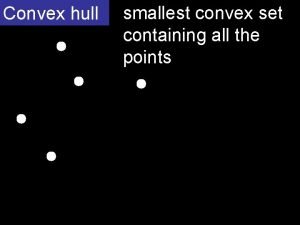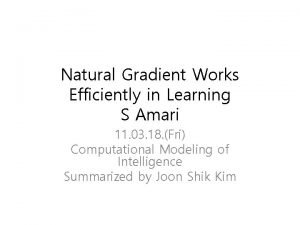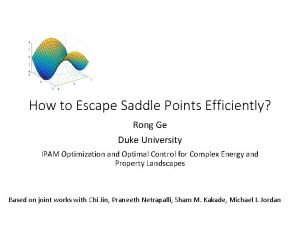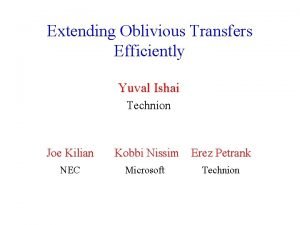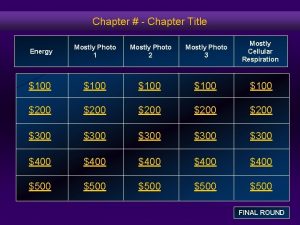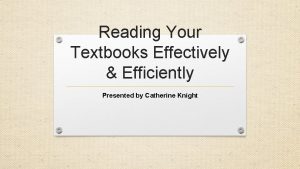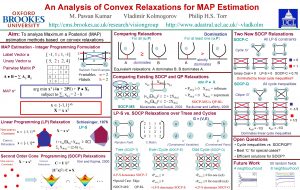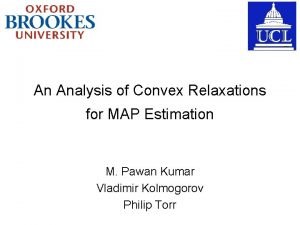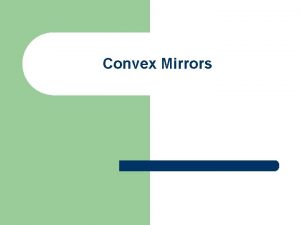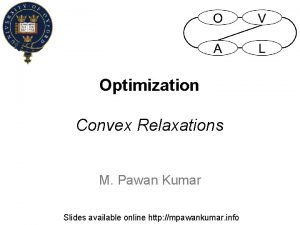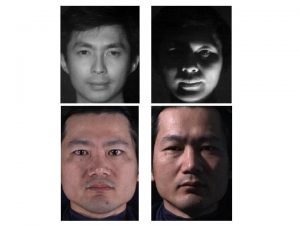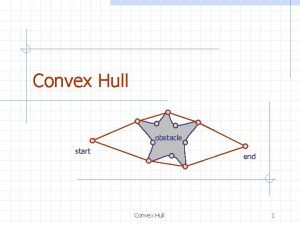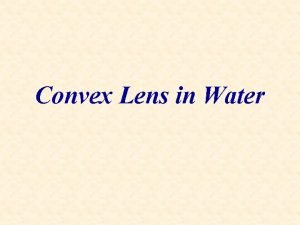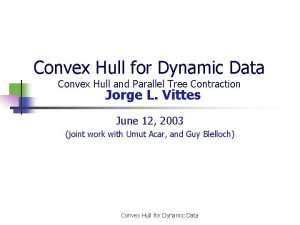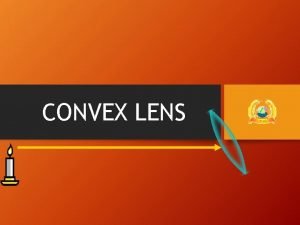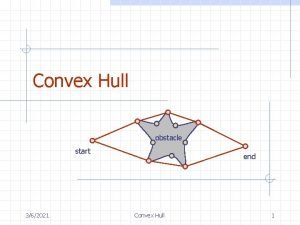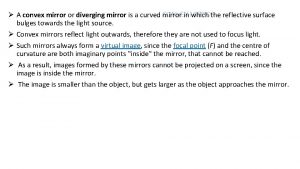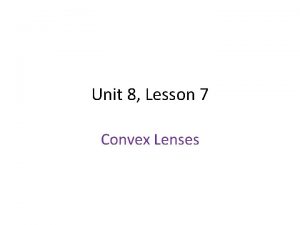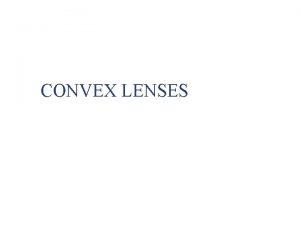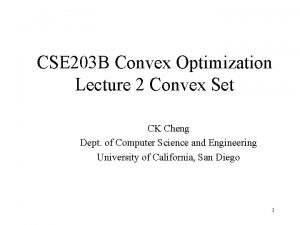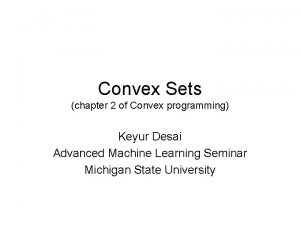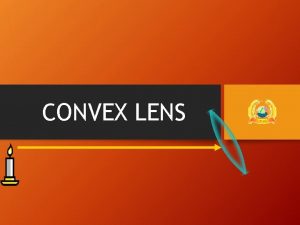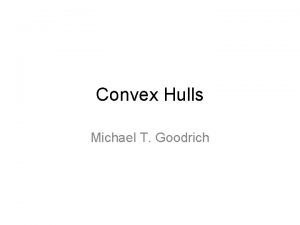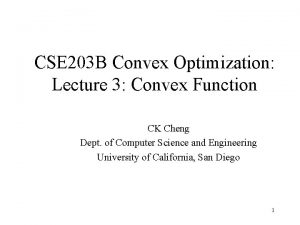Efficiently Solving Convex Relaxations for MAP Estimation M

















































- Slides: 49

Efficiently Solving Convex Relaxations for MAP Estimation M. Pawan Kumar University of Oxford Philip Torr Oxford Brookes University

Aim • To solve convex relaxations of MAP estimation Label ‘ 1’ 2 0 1 Label ‘ 0’ 5 a 2 1 0 0 4 2 b 6 4 3 1 1 3 3 1 0 c Random Variables V = {a, b, c, d} Edges E = {(a, b), (b, c), (c, d)} Label Set L = {0, 1} Labelling m = {1, 0, 0, 1} 7 d

Aim • To solve convex relaxations of MAP estimation Label ‘ 1’ 2 0 1 Label ‘ 0’ 5 a 2 1 0 0 4 2 b 6 4 3 1 1 3 3 1 0 c 7 d Cost(m) = 2 + 1 + 3 = 13 Minimum Cost Labelling? NP-hard problem Approximate using Convex Relaxations

Aim • To solve convex relaxations of MAP estimation Label ‘ 1’ 2 0 1 Label ‘ 0’ 5 a 2 1 0 0 4 2 b 6 4 3 1 1 3 3 1 0 c 7 d Objectives • Solve tighter convex relaxations – LP and SOCP • Handle large number of random variables, e. g. image pixels

Outline • Integer Programming Formulation • Linear Programming Relaxation • Additional Constraints • Solving the Convex Relaxations • Results and Conclusions

Integer Programming Formulation Unary Cost 2 Label ‘ 1’ 0 1 Label ‘ 0’ 5 Unary Cost Vector u = [ 5 3 0 a Labelling m = {1 , 0} 2 ; 2 Cost of Cost a =of 0 a = 1 4 4 ] 2 b

Integer Programming Formulation Unary Cost 2 Label ‘ 1’ 0 1 Label ‘ 0’ 5 4 3 0 a Labelling m = {1 , 0} Unary Cost Vector u = [ 5 2 ; 2 Label vector x = [ -1 1 ; 1 -1 ]T 2 b 4 ]T 1 the optimal x 0 a =find Recall that the aima is to

Integer Programming Formulation Unary Cost 2 Label ‘ 1’ 0 1 Label ‘ 0’ 5 4 3 0 a Labelling m = {1 , 0} Unary Cost Vector u = [ 5 2 ; 2 Label vector x = [ -1 1 ; 1 -1 ]T Sum of Unary Costs = 4 ]T 1 ∑ u (1 + x ) i i i 2 2 b

Integer Programming Formulation Pairwise Cost Label ‘ 1’ 2 0 1 Label ‘ 0’ Labelling m = {1 , 0} 5 a 4 3 0 2 b Pairwise Cost Matrix P 0 0 0 3 0 0 0 1 1 0 0 0 3 0 0 0 Pairwise Cost of a and a Cost of a = 0 and b = 0 Cost of a = 0 and b = 1

Integer Programming Formulation Pairwise Cost Label ‘ 1’ 2 0 1 Label ‘ 0’ Labelling m = {1 , 0} Pairwise Cost Matrix P 0 0 0 3 0 0 0 1 1 0 0 0 3 0 0 0 5 a 4 3 0 2 b Sum of Pairwise Costs 1 ∑ P (1 + x )(1+x ) ij ij i j 4

Integer Programming Formulation Pairwise Cost Label ‘ 1’ 2 0 1 Label ‘ 0’ Labelling m = {1 , 0} Pairwise Cost Matrix P 0 0 0 3 0 0 0 1 1 0 0 0 3 0 0 0 5 a 4 3 0 2 b Sum of Pairwise Costs 1 ∑ P (1 + x +x + x x ) ij ij i j 4 = 1 ∑ij Pij (1 + xi + xj + Xij) 4 X = x x. T Xij = xi xj

Integer Programming Formulation Constraints • Integer Constraints xi {-1, 1} X = x x. T • Uniqueness Constraint ∑ xi = 2 - |L| i a

Integer Programming Formulation x* = argmin 1 ∑ u (1 + x ) + 1 ∑ P (1 + x + X ) ij i j ij i i 4 2 ∑ xi = 2 - |L| i a Convex xi {-1, 1} X = x x. T Non-Convex

Outline • Integer Programming Formulation • Linear Programming Relaxation • Additional Constraints • Solving the Convex Relaxations • Results and Conclusions

Linear Programming Relaxation Schlesinger, 1976 Retain Convex Part x* = argmin 1 ∑ u (1 + x ) + 1 ∑ P (1 + x + X ) ij i j ij i i 4 2 ∑ xi = 2 - |L| i a xi {-1, 1} X = x x. T

Linear Programming Relaxation Schlesinger, 1976 Retain Convex Part x* = argmin 1 ∑ u (1 + x ) + 1 ∑ P (1 + x + X ) ij i j ij i i 4 2 ∑ xi = 2 - |L| i a xi [-1, 1] Xij [-1, 1] 1 + xi + xj + Xij ≥ 0 ∑ Xij = (2 - |L|) xi j b

Dual of the LP Relaxation Wainwright et al. , 2001 a d g b c e h = (u, P) i i f i 1 a b c 1 2 d e f 2 3 g h i 3 4 5 6 a b c d e f g h i 4 5 6

Dual of the LP Relaxation Wainwright et al. , 2001 a d g b e h c f i = (u, P) Dual of LP max i Q( i) i i Q( 1) a b c 1 Q( 2) d e f 2 Q( 3) g h i 3 Q( 4) Q( 5) Q( 6) a b c d e f g h i 4 5 6

Tree-Reweighted Message Passing Kolmogorov, 2005 4 5 6 a b c 1 a 2 d e f 3 g h i c b b c a u 2 u 4 u 1 u 3 a Pick a variable a d Reparameterize such that ui are min-marginals Only one pass of belief propagation g

Tree-Reweighted Message Passing Kolmogorov, 2005 4 5 6 a b c 1 a 2 d e f 3 g h i c b b c (u 2+u 4)/2 (u 1+u 3)/2 a Average the unary costs Repeat for all variables a Pick a variable a d g TRW-S

Outline • Integer Programming Formulation • Linear Programming Relaxation • Additional Constraints • Solving the Convex Relaxations • Results and Conclusions

Cycle Inequalities Chopra and Rao, 1991 a d b e c f At least two of them have the same sign xi xixj a xj xk d e X = xx. T Xij xjxk Xjk xkxi Xki At least one of them is 1 Xij + Xjk + Xki -1

Cycle Inequalities Chopra and Rao, 1991 a d e c f xl xi b c xj xk e b f Xij + Xjk + Xkl - Xli -2 Generalizes to all cycles LP-C

Second-Order Cone Constraints Kumar et al. , 2007 a xc = b c d e Xc = 1 Xij Xik xj Xij 1 Xjk xk Xik Xjk xi f 1 1 • (Xc - xcxc. T) 0 (xi+xj+xk)2 ≤ 3 + Xij + Xjk + Xki Xc = xcxc. T Xc xcxc. T SOCP-C

Second-Order Cone Constraints Kumar et al. , 2007 a xc = b c d e Xc = 1 Xij Xik Xil xj Xij 1 Xjk Xjl xk Xik Xjk 1 xl Xil Xkl 1 xi f Xjl Xkl 1 • (Xc - xcxc. T) 0 SOCP-Q

Outline • Integer Programming Formulation • Linear Programming Relaxation • Additional Constraints • Solving the Convex Relaxations • Results and Conclusions

Modifying the Dual a b c 1 a d g 4 d e f 2 b e h 5 g h i 3 c f i 6 max i Q( i) + j sj i i + j sj a 1 d d g 3 b b e e h h 2 c f 4 f i

Modifying TRW-S a b c a d g a b b c d e f b e h d e e f g h i c f i d e e f g h h i Pick a variable --- a Pick a cycle/clique with a max i Q( i) + j sj i i + j sj Can be solved efficiently Run TRW-S for trees with a REPEAT

Properties of the Algorithm satisfies the reparametrization constraint Value of dual never decreases CONVERGENCE Solution satisfies Weak Tree Agreement (WTA) WTA not sufficient for convergence More accurate results than TRW-S

Outline • Integer Programming Formulation • Linear Programming Relaxation • Additional Constraints • Solving the Convex Relaxations • Results and Conclusions

4 -Neighbourhood MRF Test SOCP-C Test LP-C 50 binary MRFs of size 30 x 30 u ≈ N (0, 1) P ≈ N (0, σ2)

4 -Neighbourhood MRF σ=5 LP-C dominates SOCP-C

8 -Neighbourhood MRF Test SOCP-Q 50 binary MRFs of size 30 x 30 u ≈ N (0, 1) P ≈ N (0, σ2)

8 -Neighbourhood MRF σ = 5 / 2 SOCP-Q dominates LP-C

Conclusions • Modified LP dual to include more constraints • Extended TRW-S to solve tighter dual • Experiments show improvement • More results in the poster

Future Work • More efficient subroutines for solving cycles/cliques • Using more accurate LP solvers proximal projections • Analysis of SOCP-C vs. LP-C

Questions?

Timings Method Time/Iteration BP 0. 0027 TRW-S 0. 0027 LP-C 7. 7778 SOCP-C 8. 8091 SOCP-Q 9. 1170 Linear in the number of variables!!

Video Segmentation Keyframe User Segmentation Segment remaining video ….

Video Segmentation Input Belief Propagation 8175 25620 18314

Video Segmentation Input -swap 1187 1368 1289

Video Segmentation Input -expansion 2453 1266 1225

Video Segmentation Input TRW-S 6425 1309 297

Video Segmentation Input LP-C 719 264 294

Video Segmentation Input SOCP-Q 0 0 0

4 -Neighbourhood MRF σ=1

4 -Neighbourhood MRF σ = 2. 5

8 -Neighbourhood MRF σ = 1/ 2

8 -Neighbourhood MRF σ = 2. 5 / 2
 Tableau des relaxations dynamiques
Tableau des relaxations dynamiques Convex polygon examples
Convex polygon examples Convex hull is the smallest convex set
Convex hull is the smallest convex set Natural gradient works efficiently in learning
Natural gradient works efficiently in learning Rong ge
Rong ge Extending oblivious transfers efficiently
Extending oblivious transfers efficiently Fermentation enables glycolysis to continue under
Fermentation enables glycolysis to continue under By efficiently managing external relations
By efficiently managing external relations Reading effectively and efficiently
Reading effectively and efficiently Fspos
Fspos Typiska drag för en novell
Typiska drag för en novell Tack för att ni lyssnade bild
Tack för att ni lyssnade bild Ekologiskt fotavtryck
Ekologiskt fotavtryck Shingelfrisyren
Shingelfrisyren En lathund för arbete med kontinuitetshantering
En lathund för arbete med kontinuitetshantering Personalliggare bygg undantag
Personalliggare bygg undantag Personlig tidbok
Personlig tidbok A gastrica
A gastrica Förklara densitet för barn
Förklara densitet för barn Datorkunskap för nybörjare
Datorkunskap för nybörjare Stig kerman
Stig kerman Debatt mall
Debatt mall Delegerande ledarskap
Delegerande ledarskap Nyckelkompetenser för livslångt lärande
Nyckelkompetenser för livslångt lärande Påbyggnader för flakfordon
Påbyggnader för flakfordon Tryck formel
Tryck formel Publik sektor
Publik sektor Jag har nigit för nymånens skära text
Jag har nigit för nymånens skära text Presentera för publik crossboss
Presentera för publik crossboss Teckenspråk minoritetsspråk argument
Teckenspråk minoritetsspråk argument Vem räknas som jude
Vem räknas som jude Klassificeringsstruktur för kommunala verksamheter
Klassificeringsstruktur för kommunala verksamheter Luftstrupen för medicinare
Luftstrupen för medicinare Claes martinsson
Claes martinsson Cks
Cks Byggprocessen steg för steg
Byggprocessen steg för steg Bra mat för unga idrottare
Bra mat för unga idrottare Verktyg för automatisering av utbetalningar
Verktyg för automatisering av utbetalningar Rutin för avvikelsehantering
Rutin för avvikelsehantering Smärtskolan kunskap för livet
Smärtskolan kunskap för livet Ministerstyre för och nackdelar
Ministerstyre för och nackdelar Tack för att ni har lyssnat
Tack för att ni har lyssnat Referatmarkering
Referatmarkering Redogör för vad psykologi är
Redogör för vad psykologi är Stål för stötfångarsystem
Stål för stötfångarsystem Tack för att ni har lyssnat
Tack för att ni har lyssnat Borra hål för knoppar
Borra hål för knoppar Vilken grundregel finns det för tronföljden i sverige?
Vilken grundregel finns det för tronföljden i sverige? Variansen formel
Variansen formel Tack för att ni har lyssnat
Tack för att ni har lyssnat


